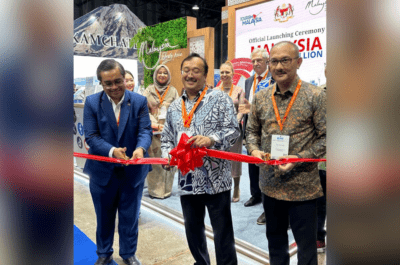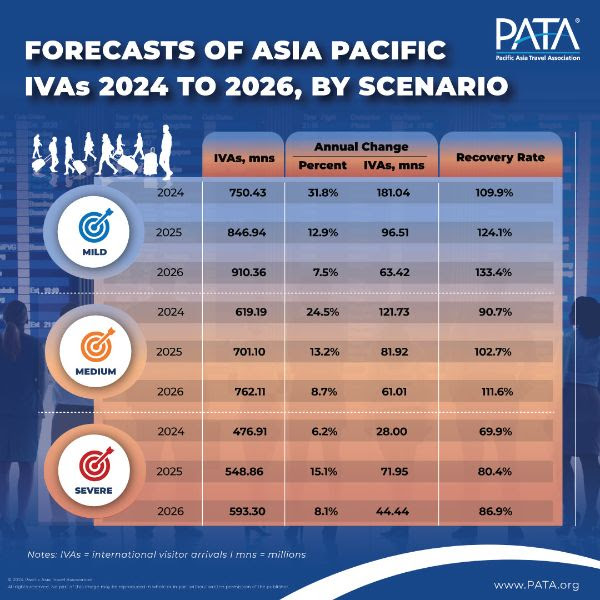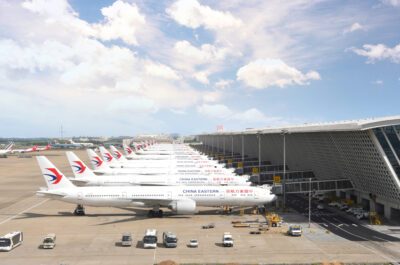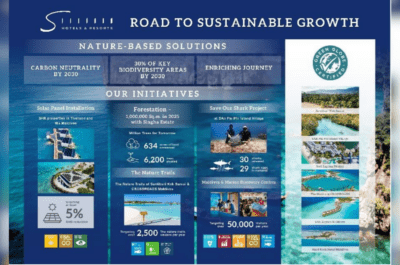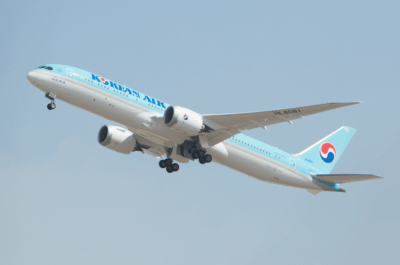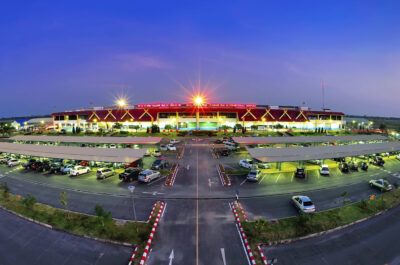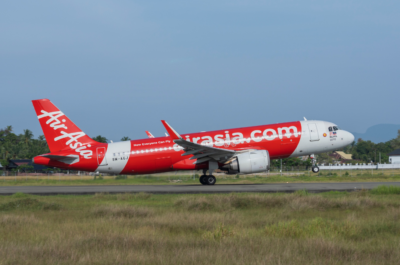PATA forecasts show international visitor arrivals (IVAs) in Asia Pacific growing annually from 2024 to 2026, with pre-COVID levels expected to be surpassed by 2024 or 2025, depending on the scenario. Growth reflects the region’s efforts in revitalizing tourism and adapting to changes, despite potential disparities among destinations and scenarios. Asia remains the dominant source and destination for IVAs, highlighting the region’s resilience and the importance of maintaining service standards to compete globally.
BANGKOK – The Pacific Asia Travel Association (PATA) released the Executive Summary report for its latest forecasts for international visitor arrivals (IVAs) into and across Asia Pacific, which shows strong annual increases in numbers for 2024 with growth momentum continuing to 2026.
It is expected that pre-COVID levels of IVAs shall be surpassed in 2024 under the mild scenario, and in 2025 under the medium scenario. However, the severe scenario remains a possibility and arrival numbers are predicted to remain around 13 percentage points below the 2019 benchmark by the end of 2026 under such conditions. Nevertheless, the growth felt across the Asia Pacific region validates the enormous work by destinations in luring international travellers and that the complete visitor economy remains vital for national economic recovery.
“The latest PATA forecasts shed light on the swift recovery of the international arrivals numbers in and across the Asia Pacific region, showing signs of strong visitor growth each year between 2024 and 2026 under the mild and medium scenarios, such trends were somewhat driven by joint agreements on destination visa requirements.” PATA CEO Noor Ahmad Hamid noted.
“We cannot, however, expect uniformity in growth from that and other source markets across all the destinations of Asia Pacific, as many will increase their inbound counts at their own pace and in their own time. Furthermore, we must recognise this as a time of fast-paced and constant changes. All of us must remain vigilant of sudden shifts within the industry and be prepared with viable strategies and appropriate coping mechanisms for future uncertainties.”
In absolute terms, the number of IVAs predicted for 2024 ranges from a high of 750 million under the mild scenario, to 619 million under the medium scenario, and 477 million under the severe scenario.
While annual increases of IVA numbers into and across Asia Pacific are expected to be robust from 2024 to 2026, significant differences exist for each of the three destination regions as well as for each of the 39 individual destinations covered in the report, and by each of the possible scenarios.
The annual growth rate for IVAs into and across Asia, for example, is predicted to be in this order: 34% in 2024 under the mild scenario, 29% under the medium scenario, and 11% under the severe scenario. The annual IVA numbers are also predicted to decrease slightly during the three years leading up to 2026, reflecting the return to a more stable longer-term growth rate as the ‘s-shaped’ travel demand curve returns to a more consistent position.
While the Americas and the Pacific regions are forecast to have less potent growth compared to Asia, they still have generally significant growth rates and absolute volume increases, with some minor fluctuations over the forecast period.
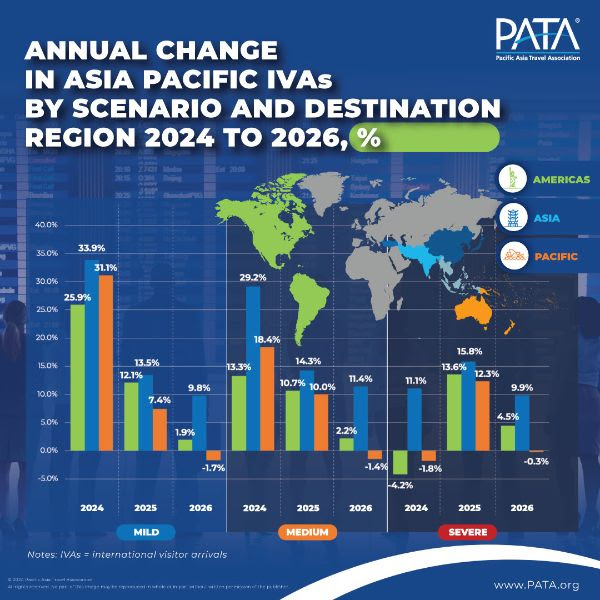
The annual growth rate for IVAs into and across Asia, for example, is predicted to be in this order: 34% in 2024 under the mild scenario, 29% under the medium scenario, and 11% under the severe scenario. The annual IVA numbers are also predicted to decrease slightly during the three years leading up to 2026, reflecting the return to a more stable longer-term growth rate as the ‘s-shaped’ travel demand curve returns to a more consistent position.
While the Americas and the Pacific regions are forecast to have less potent growth compared to Asia, they still have generally significant growth rates and absolute volume increases, with some minor fluctuations over the forecast period.
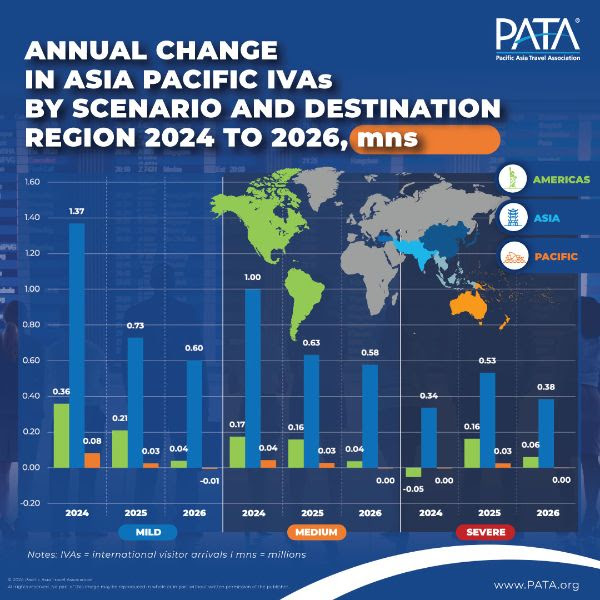
Despite the prevailing scenario conditions, it seems Asia will maintain a powerful advantage in IVA numbers each year from 2024 to 2026, capturing more than 70% of arrivals into and across Asia Pacific.
Asia is also predicted to dominate as a supplier region of IVAs, returning to a significant level of dominance by supplying more than 58% of all IVAs into Asia Pacific in 2024, under each of the three scenarios. The Americas and Europe followed with shares of around 19% and 14% that same year.
By the end of 2026, Asia is forecast to account for more than 61% of all foreign arrivals across Asia Pacific.
Mr Hamid added, “Even as arrival numbers climb on an upward trajectory, the issues of staffing and maintaining service excellence remain critical issues for destinations within the region, especially now as global competition seeks out the growing source markets contained within Asia Pacific. Any aspect of complacency will be an ever-present danger and must be avoided.”
The report provides:
- A forecast summary of IVAs for Asia Pacific between 2024 and 2026 by destination region and sub-region, highlighting changing opportunities in the post-COVID era; and
- Highlights of the key source markets within each Asia Pacific destination region over the forecast period of 2024 to 2026.
Theodore is the Co-Founder and Managing Editor of TravelDailyNews Media Network; his responsibilities include business development and planning for TravelDailyNews long-term opportunities.




![[PR] PR_Ascott and Vimut Hospital_2024](https://www.traveldailynews.asia/wp-content/uploads/2024/04/PR-PR_Ascott-and-Vimut-Hospital_2024-400x265.jpg)
